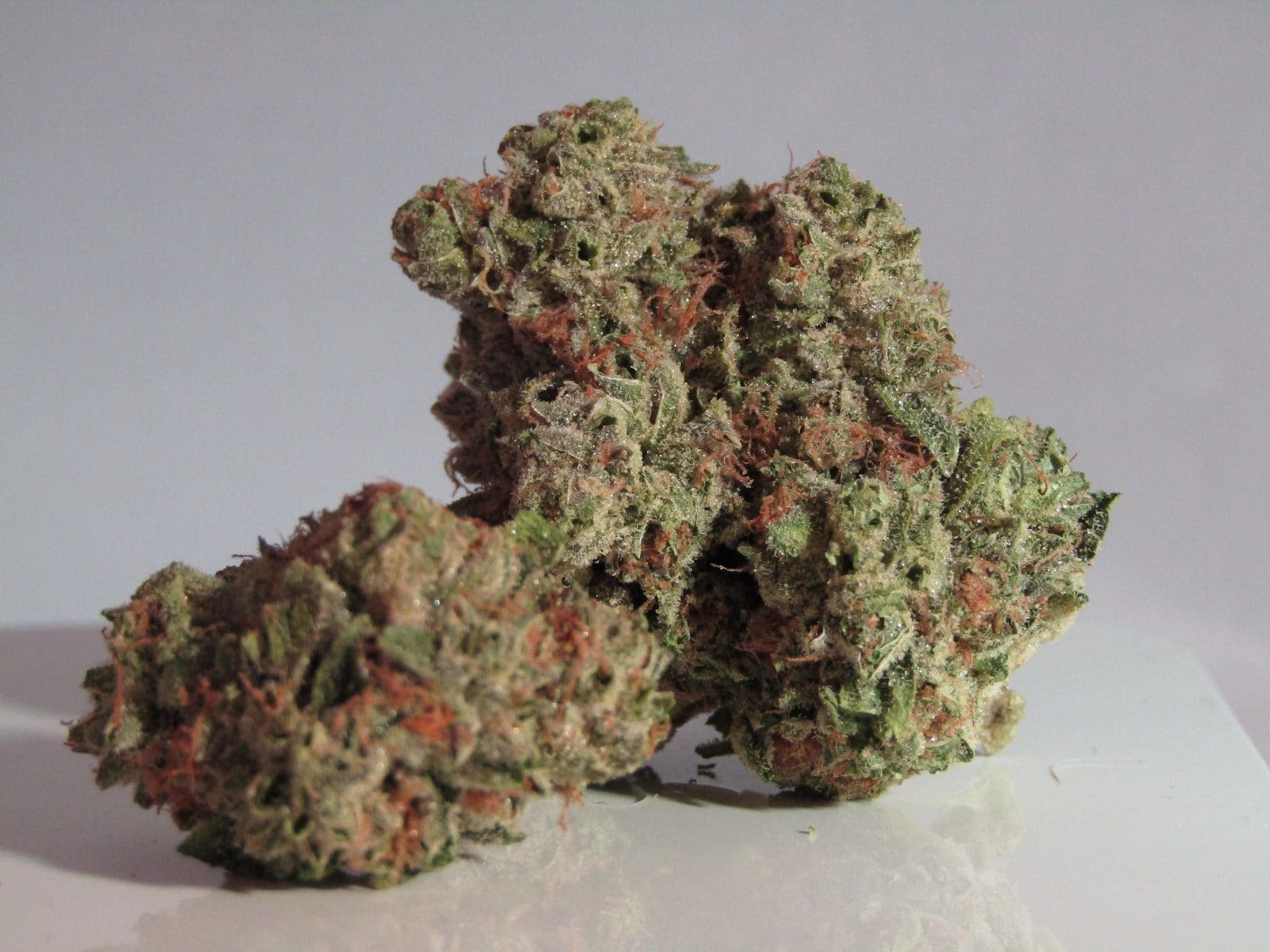Weed, or Cannabis as scientifically called, belongs to the family of Cannabaceae. The plant of Cannabis is called by another name known as hemp, which is used for non-medicinal purposes.
Besides being used as a drug, cannabis has other uses as well, such as fibre, seeds, oil, vegetable, juice etc.
Cannabis is classified into three species: Cannabis sativa, Cannabis indica, and Cannabis ruderalis. Haze and Kush belong to the set of Cannabis indica and Cannabis sativa, respectively.
Key Takeaways
- Kush is a cannabis strain known for its relaxing and soothing effects.
- Haze is a cannabis strain known for its energizing and uplifting effects.
- While kush is associated with a heavy, body-focused high, haze is associated with a more cerebral, head-focused high.
Kush vs Haze
The difference between Kush and Haze is that they belong to different species. Kush belongs to the set of Cannabis Indica, and Haze belongs to the set of Cannabis sativa. Kush is considered to be the best weed when compared to Haze. But when it comes to power and toxicity, Haze is best for that.

Kush is believed to be originated from the regions of Afghanistan, Northern Pakistan and North-West India. It got its name from the Hindu-Kush mountain range.
Kush Plant was taken into America in the year the 1970s, and since then till present, it has grown there. Kush has very different purposes. For example, its plant fibres are made into cloth. It produces a large amount of tetrahydrocannabinol (THC).
Haze is believed to be originated in central California and Jamaica. The haze plant is taller when compared to the Kush plant. It can grow up to 20 feet in height and is very bushy. The seeds of Haze are very small in size.
Haze comes in many different variants, such as El Nino, Purple Haze, Arjan’s Haze Blue Pearl etc. It belongs to the set of Cannabis sativa. The species of ‘sativa’ was first discovered by Carl Linnaeus in the year 1753. ‘Sativa’ means the plant which is cultivated.
Comparison Table
| Parameters of Comparison | Kush | Haze |
|---|---|---|
| Class | It belongs to the class of Cannabis indica. | It belongs to the class of Cannabis sativa. |
| Origins | It originated somewhere in Afghanistan, Pakistan, and India. | It originated in Central California and Jamaica(West Indies) |
| Taxonomy | It was first published by Jean-Baptiste Lamarck in 1785. | Carl Linnaeus first classified Haze in 1753. |
| Taste | It tastes like grapes. | It has a sour and sweet taste. |
| Variants | It includes variants like the Hindu Kush, OG Kush, Purple Kush, and Master Kush. | It includes variants like Purple Haze, El Nino, Arjan’s Haze, Blue Pearl. |
What is Kush?
Kush belongs to the family of Cannabis indica. It was published by Jean-Baptiste Lamarck in 1785. Lamarck found it when he was collecting specimens of plants from India.
Kush is very short in height, conical in shape and densely branched. Leaves of Kush, or the species of Cannabis indica, have short and broad leaflets. It is believed that Kush originated from the Hindukush mountain range, where the conditions are extremely harsh and cold.
Due to this reason, Kush can be cultivated in temperate regions as well. Kush has a higher content of tetrahydrocannabinol(THC) when compared to Haze.
Cannabis indica is also cultivated traditionally in India or illegally for the production of charas which is a form of hashish. Kush is very beneficial in treating the pain of the body and is sometimes called ‘body buzz’.
In addition to that, it is also used for treating insomnia, anxiolytic, a type of anxiety disorder etc. It is also used for medicinal as well as recreational purposes.
Kush, or the species of Cannabis indica, possesses the power of soothing and calming nerves and relaxes and relieves a person’s pain.
In the 1970s, Cannabis indica was brought from India and taken to the USA to form a hybrid with Cannabis Sativa to increase marijuana production in the USA.

What is Haze?
Haze belongs to the family of Cannabis sativa, which is a flowering plant. Earlier, it was indigenous to Eastern Asia, but now it is found globally due to its widespread distribution.
Since the beginning, before it was discovered, Haze has been used source of industrial fibre, food, recreation, seed oil, religious and spiritual moods and medicine. For the very first time, the species of Cannabis sativa to which haze belongs was discovered by Carl Linnaeus in 1753.
Haze’s flowers are unisexual, meaning they can either be male or female. It grows to be a taller and bushy plant, unlike Kush. The main element in Haze is tetrahydrocannabinol(THC), which is also found in Kush.
But besides that, it consists of 500 compounds and at least 113 cannabinoids. However, the levels of THC are very lower in comparison to cannabis Indica.
Haze has so much powerful effects of uplifting your cerebral capabilities that distinguish it from other marijuana. It requires 16-18 hours of light daily to grow vegetatively. The pH level of the soil must be 6.3 to 6.8.
Haze grows to be taller, up to 20 feet, and is a bushy plant. Seeds of Haze are potent. The taste of Haze is sweet and sour. Variants include El Nino, Purple Haze, Arjan’s Haze, and Blue Pearl.

Main Differences Between Kush and Haze
- Kush belongs to the class of Cannabis indica. Haze belongs to the class of Cannabis sativa.
- Kush originated somewhere in Afghanistan, Pakistan and India and is named after the Hindukush mountain ranges. Haze originated in Central California and Jamaica(West Indies) but is also considered indigenous to Central Asia.
- Haze was first classified by Carl Linnaeus in 1753. Kush was first published by Jean-Baptiste Lamarck in 1785 and then carried by Lamarck to the USA for cross-breeding with Cannabis sativa.
- Kush tastes like grapes and has a sweet, pungent smell which is very strong. Haze has a sour and sweet taste and has a spicy, citrus smell.
- Kush includes variants like the Hindu Kush, OG Kush, Purple Kush, and Master Kush. Haze includes variants like Purple Haze, El Nino, Arjan’s Haze, and Blue Pearl.

- https://tobaccocontrol.bmj.com/content/16/1/70.1.extract
- https://tobaccocontrol.bmj.com/content/16/1/70.2.short

The detailed origins and taxonomy of both Kush and Haze provided in this article are insightful. It’s fascinating to learn about the geographic locations and historical background of these cannabis strains.
I agree, understanding the historical origins and taxonomy helps to appreciate the cultural significance of these cannabis strains.
The article provides comprehensive information about the unique characteristics and geographical origins of Kush and Haze. The distinctions between the two are well explained.
The article’s comprehensive coverage of Kush and Haze is remarkable. The detailed descriptions and effects of these cannabis strains offer valuable insights for readers.
You’re absolutely right. The detailed descriptions and effects of Kush and Haze provide a comprehensive understanding of their attributes.
The detailed insights into the geographical origins, variants, and taste profiles of Kush and Haze are informative. The taxonomic details and the historical background are especially noteworthy.
The historical background and taxonomic classifications significantly enhance the understanding of Kush and Haze. This article is an invaluable resource for cannabis enthusiasts.
The comprehensive analysis of the geographical origins and taste profiles of Kush and Haze is commendable. The article provides a well-rounded perspective on these cannabis strains.
The scientific details and comprehensive comparison between Kush and Haze presented in this article are commendable. It provides a nuanced understanding of the unique features of these cannabis strains.
The scientific and comparative analysis of Kush and Haze is exceptional. This article contributes to a deeper understanding of cannabis classification.
The detailed descriptions of the origins and variants of Kush and Haze in this article are enlightening. The historical insights and geographical details offer a comprehensive view of these cannabis strains.
I agree. The historical and geographical context provided in the article is essential for understanding the development and characteristics of Kush and Haze.
The medicinal properties and effects of Kush and Haze described in this article are very informative. The research and historical information pertaining to these cannabis strains are well-documented.
I find the medicinal attributes and effects of Kush and Haze to be particularly intriguing. The article effectively highlights the therapeutic potential of these cannabis strains.
The detailed insights into the medicinal uses and therapeutic effects of Cannabis strains presented in this article are enlightening.
The information provided on the origins, botanical characteristics, and taste profiles of both Kush and Haze is intriguing. The article offers a holistic view of these cannabis strains.
I found the botanical descriptions and taste comparisons of Kush and Haze very informative. The article provides a thorough analysis of these cannabis strains.
The botanical descriptions and taste profiles of Kush and Haze are presented in a comprehensive manner in this article.
Thank you for this valuable information about Cannabis. This article has helped me understand the key takeaways, differences between Kush and Haze, and the origins and variants of both. It is interesting to learn about the uses of Cannabis and its classification into different species.
Your comment summarizes the article well. The comparison table is particularly helpful in understanding the characteristics of both Haze and Kush.
The detailed descriptions and historical insights provided in this article are insightful. It effectively highlights the essential characteristics and medicinal uses of Kush and Haze.
The comprehensive comparison table provided in the article effectively outlines the key differences between Kush and Haze. The historical accounts and taxonomic details are also noteworthy.
The historical accounts and detailed taxonomy of Kush and Haze are presented exceptionally well. This article is a valuable resource for understanding cannabis classification.
You’re absolutely right. The comparison table enhances the understanding of the unique characteristics and attributes of each cannabis strain.